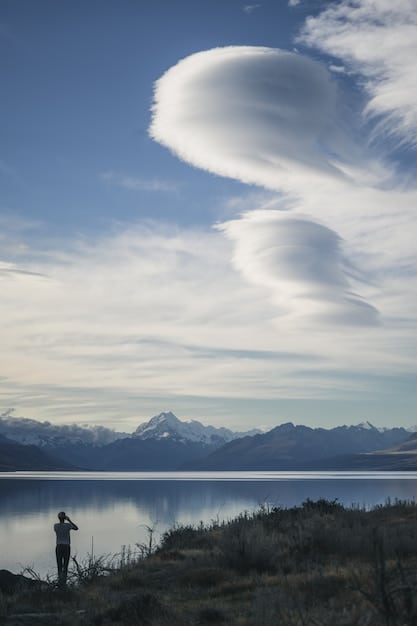Understanding Camera Raw: A Comprehensive Guide for Photographers

Camera Raw is a file format containing minimally processed data from a digital camera’s image sensor. Unlike JPEGs, Raw files retain the most information possible, offering photographers greater flexibility in post-processing to adjust settings such as exposure, white balance, and contrast without significant quality loss.
Dive into the world of camera raw files and discover how they can revolutionize your photography workflow. Understanding and utilizing camera raw can unlock greater creative potential and improve the quality of your images, offering unparalleled control in post-processing.
What is Camera Raw?
Camera Raw is more than just a file format; it’s a gateway to capturing and processing your photos with maximum control. It’s the digital equivalent of a film negative, containing virtually untouched data straight from your camera’s sensor.
The Essence of Raw Files
At its core, a Raw file is the unprocessed or minimally processed data from a digital camera’s image sensor. It contains all the information captured by the sensor during the exposure.
This differs significantly from JPEG files, which are processed and compressed within the camera, resulting in some data loss.
- Uncompressed Data: Raw files retain virtually all the data captured, providing a broader range of adjustments in post-processing.
- Greater Dynamic Range: Raw files generally have a wider dynamic range than JPEGs, allowing for more detail in both highlights and shadows.
- Non-Destructive Editing: When you edit a Raw file, the original data remains intact. Adjustments are stored in a separate file, ensuring you can always revert to the original image.

Choosing to shoot in Raw gives you the ability to make significant adjustments to your images in post-processing, without sacrificing image quality. It’s a key step toward achieving professional-level photography.
Benefits of Shooting in Camera Raw
Capturing images in camera raw provides numerous advantages that enhance your ability to fine-tune and optimize your photographs. The flexibility and control offered by raw files enable you to achieve stunning results that would be impossible with other formats.
Superior Image Quality
One of the primary benefits of shooting in camera raw is the superior image quality it offers. This stems from the greater amount of data retained in the raw file compared to compressed formats like JPEG.
With more data, you have more flexibility to correct errors and enhance details in post-processing, resulting in sharper, clearer images.
Greater Dynamic Range
Raw files capture a wider dynamic range, meaning they can record more detail in both the brightest and darkest areas of an image.
- Highlight Recovery: You can often recover details in overexposed highlights that would be lost in a JPEG.
- Shadow Detail: Similarly, raw files allow you to bring out details from deep shadows without introducing excessive noise.
- Gradual Adjustments: The increased dynamic range allows for more subtle and natural-looking adjustments to exposure and contrast.
Shooting in Raw is particularly beneficial in high-contrast situations, where capturing detail in both the bright and dark areas is crucial.
Camera Raw vs. JPEG: Key Differences
When choosing between Camera Raw and JPEG, it’s important to understand the fundamental differences in how these file formats handle image data. These distinctions can significantly impact your photography workflow and the final quality of your images.
Data Retention and Compression
The most significant difference between Camera Raw and JPEG lies in how each format handles data. Raw files retain nearly all the information captured by the camera’s sensor, while JPEGs compress and discard a significant portion of this data.
This compression in JPEGs results in smaller file sizes but at the cost of reduced image quality and flexibility in post-processing.
Post-Processing Flexibility
Raw files offer far greater flexibility in post-processing compared to JPEGs. Because raw files retain more data, you have more latitude to make adjustments to settings like exposure, white balance, and contrast without introducing artifacts or degrading the image quality.
With JPEGs, making significant adjustments can quickly lead to visible degradation and loss of detail.
File Size and Storage
Raw files are significantly larger than JPEGs due to the greater amount of data they contain. This means you’ll need more storage space on your camera’s memory card and your computer.
- Storage Considerations: Consider investing in larger memory cards and external hard drives if you plan to shoot primarily in Raw.
- Workflow Implications: Larger file sizes can also impact your workflow, as Raw files take longer to transfer and process.
- Balancing Act: The trade-off is that you gain significantly more control and quality for your investments in storage.

Understanding these key differences will help you make an informed decision about which file format is best suited to your needs and photography style.
Essential Camera Raw Editing Techniques
Mastering camera raw editing techniques is essential for unlocking the full potential of your raw files. By using the right tools and methods, you can transform your images and create stunning results that reflect your artistic vision.
Exposure Correction
Adjusting the exposure is often the first step in editing a raw file. Raw files provide more latitude to correct overexposed or underexposed images.
You can effectively brighten or darken the image without introducing artifacts or excessive noise.
White Balance Adjustment
Setting the correct white balance is crucial for accurate color rendition. Raw files allow you to adjust the white balance after the photo has been taken, which is especially useful if you shot in mixed lighting conditions.
- Color Temperature: Adjust the “temperature” slider to correct for warm or cool color casts.
- Tint Adjustment: Use the “tint” slider to correct for green or magenta hues.
- Presets: You can also use white balance presets for common lighting conditions, such as daylight, cloudy, or tungsten.
Accurate white balance ensures that your colors are true to life and that your images have a natural and pleasing appearance.
Software Options for Editing Camera Raw Files
Choosing the right software is critical for effectively editing camera raw files. Several powerful options are available, each with its own strengths and features.
Adobe Camera Raw
Adobe Camera Raw (ACR) is a plugin for Adobe Photoshop that allows you to open and edit raw files directly within Photoshop. ACR offers a comprehensive set of tools for adjusting exposure, white balance, color, and detail.
It’s widely regarded as one of the most powerful and versatile raw editing tools available.
Adobe Lightroom
Adobe Lightroom is a dedicated photo editing and management software that is specifically designed for working with raw files. Lightroom’s non-destructive editing workflow and extensive range of adjustment tools make it a popular choice among photographers.
- Organization Tools: Lightroom also offers robust organization features for managing and cataloging your photo library.
- Syncing: Available on desktop and mobile platforms
- Presets: Allows users to create and utilize custom presets
Lightroom’s workflow is optimized for processing large batches of images, making it an efficient choice for professional photographers.
Tips for Optimizing Your Camera Raw Workflow
Optimizing your camera raw workflow can save you time and improve the quality of your results. Here are some tips to help you streamline your process and get the most out of your raw files.
Shoot with Intention
While raw files offer great flexibility, it’s still important to capture the best possible image in-camera.
Pay attention to exposure, composition, and focus to minimize the amount of correction needed in post-processing.
Use a Color Calibration Tool
A color calibration tool can help ensure that your monitor is displaying colors accurately. This is essential for making accurate color adjustments in your raw files.
- Consistent Images: A calibrated monitor will ensure accurate representation of the colors.
- Tool Choices: X-Rite ColorMunki and SpyderX are popular.
Use a color calibration tool regularly to maintain consistent and accurate color rendition across your workflow.
| Key Point | Brief Description |
|---|---|
| 📸 Raw Files | Contain unprocessed data, offering flexibility in editing. |
| 🎨 Post-Processing | Allows non-destructive adjustments with more control over images. |
| 💾 File Size | Larger than JPEGs, requiring more storage but preserving quality. |
| 🛠️ Editing Software | Options include Adobe Camera Raw and Lightroom for raw file processing. |
Frequently Asked Questions
▼
The primary advantage is the greater control and flexibility it offers during post-processing. Raw files retain more data, allowing for extensive adjustments without significant quality loss.
▼
For photographers seeking high-quality results and extensive editing capabilities, camera raw is superior. JPEG is convenient for quick sharing but lacks the depth of data and flexibility of raw.
▼
Yes, you can easily convert camera raw files to JPEG using editing software like Adobe Photoshop or Lightroom. This conversion is often the final step after making adjustments to the raw file.
▼
Yes, raw files are significantly larger than JPEGs, meaning they require more storage space on your camera’s memory card and your computer’s hard drive. Consider larger storage.
▼
You can edit camera raw files using software like Adobe Camera Raw (ACR), Adobe Lightroom, Capture One, or other specialized raw processing programs. Each offers various tools and workflows.
Conclusion
In conclusion, understanding and utilizing camera raw files can significantly enhance your photography. The benefits of shooting in raw, including superior image quality, greater dynamic range, and non-destructive editing, make it a powerful tool for photographers seeking to achieve professional-level results. By mastering essential editing techniques and choosing the right software, you can optimize your workflow and unlock the full potential of your raw images.





